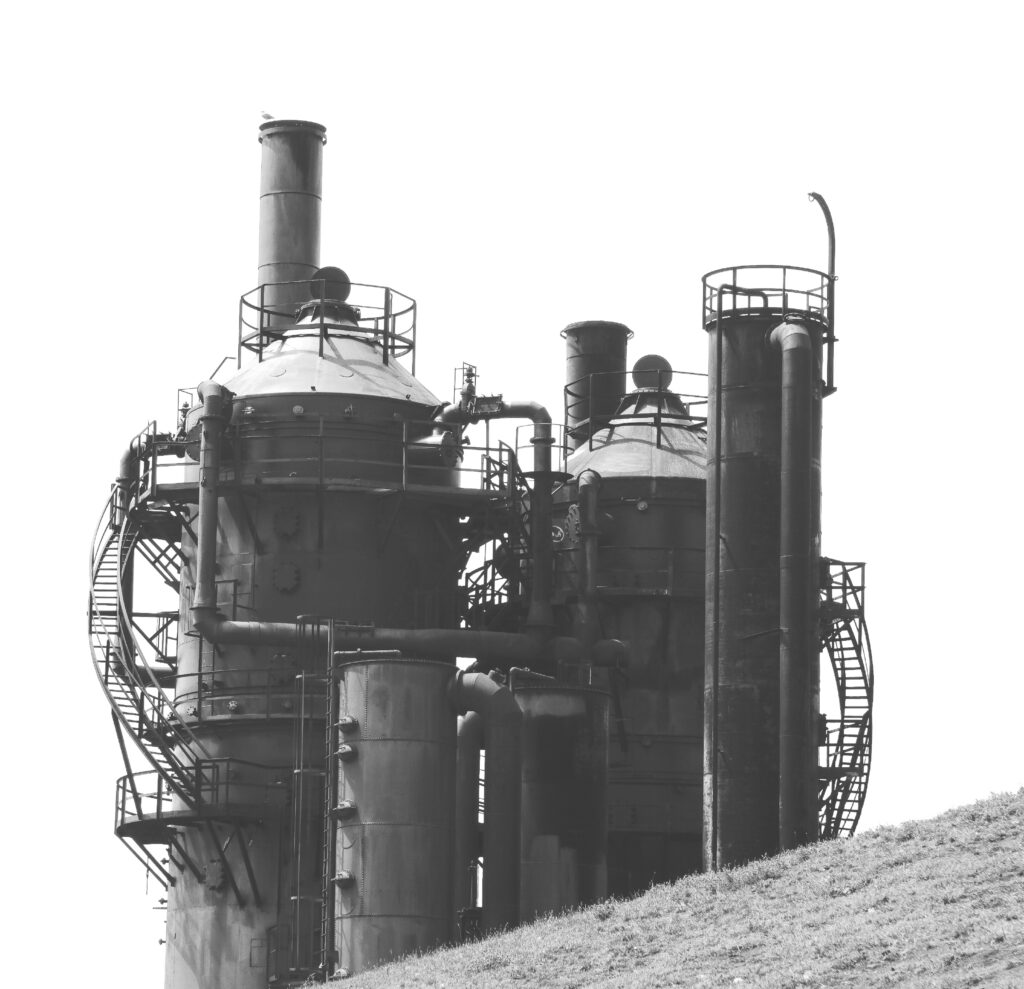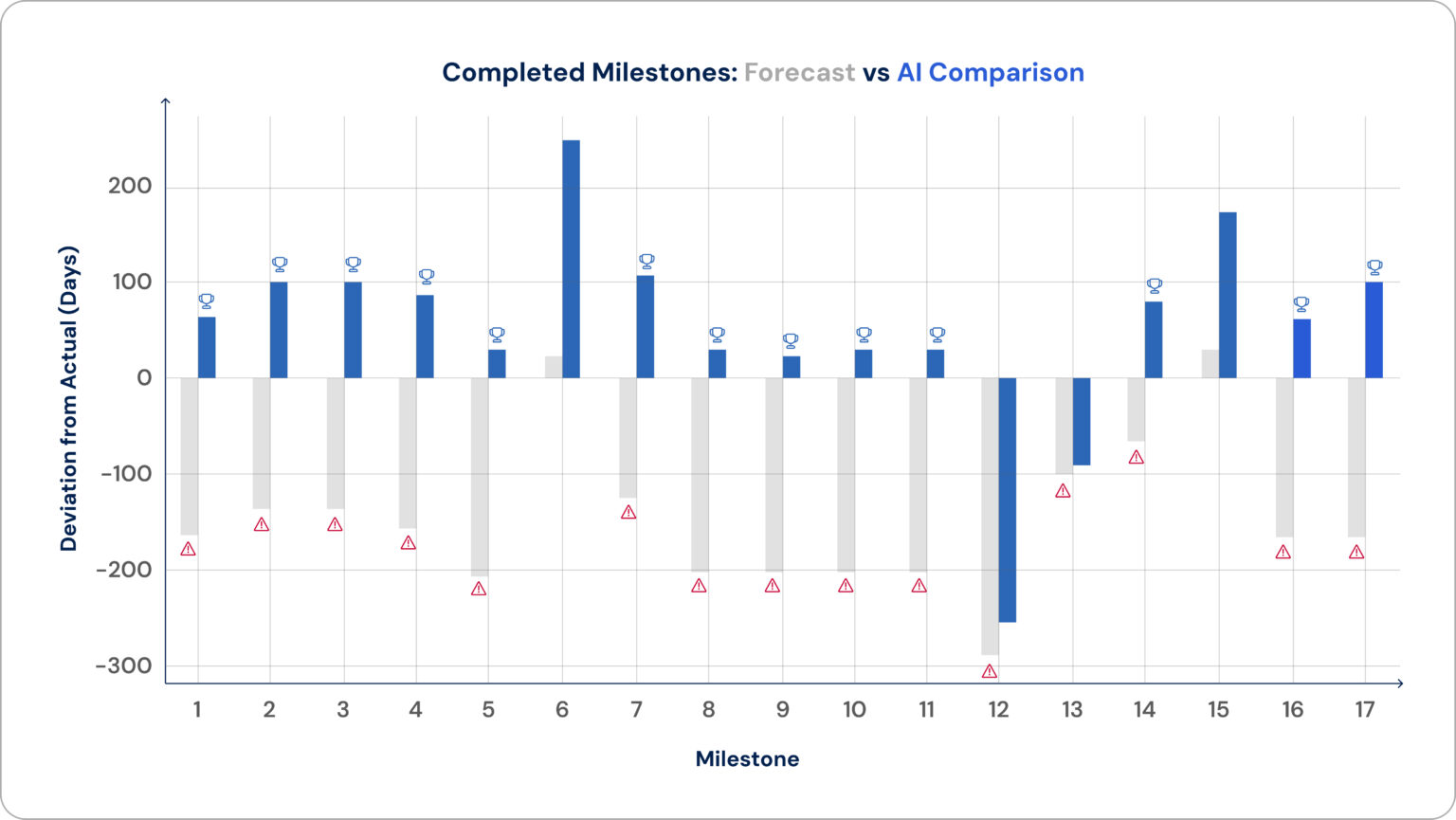PaCE is a consultancy firm specialising in project controls across industries, including mining, oil and gas, petrochemicals, and infrastructure. PaCE partners with clients to enhance the planning, forecasting, and management of complex projects.
This study focuses on PaCE’s work in the oil and gas sector, where the high-stakes, time-sensitive nature of projects makes accurate, actionable insights essential. To keep projects on track, PaCE recognised the need for a solution that could improve forecast accuracy, boost predictability, minimise delays, and control costs —ultimately supporting clients in meeting their strategic objectives.

The oil and gas industry faces unique challenges that make accurate project forecasting critical:





Given these challenges, PaCE recognised the need for advanced forecasting tools that could address these complexities, improve accuracy, and support better decision-making. Accurate forecasting was essential for keeping projects on track in an industry where precision is vital to success.
Given the critical nature of projects in the oil and gas industry, even minor delays or cost overruns can have significant financial and operational consequences. However, achieving accurate forecasts in such a high-stakes environment is complicated by a common issue: optimism bias. Human planners, even with extensive experience, often underestimate the time and resources needed to complete high-stakes tasks, resulting in overly optimistic schedules.
This bias reduces forecast predictability, leading to missed milestones, delays, and budget overruns that strain both project timelines and stakeholder trust. With inaccurate forecasts, it becomes difficult for teams to identify high-risk areas requiring additional focus, leading to inefficiencies and increased project risks.
When optimism bias skews forecasting, project timelines become unreliable, and critical resources may be allocated to the wrong areas, increasing the likelihood of costly delays. In the absence of accurate predictions, project teams are often left scrambling to address unforeseen issues that could have been mitigated with more objective insights.
For PaCE’s clients, this lack of accuracy complicates risk management efforts, resulting in delayed timelines, increased costs, and missed project goals, ultimately jeopardising the project’s success and impacting stakeholder confidence.

To tackle these challenges, PaCE implemented AI-driven forecasting with Nodes & Links AI to counteract optimism bias and increase predictability across its oil and gas projects. By integrating Nodes & Links AI, PaCE aimed to provide objective insights that complement human expertise, enabling teams to make more data-driven, reliable decisions and prioritise resources effectively.


Enhanced Forecast Accuracy: Across various tests, AI demonstrated a significant improvement in forecast accuracy compared to human projections. In milestone forecasting, Nodes & Links AI predictions were closer to actual completion dates in 15 out of 17 milestones, outperforming traditional forecasts.
Reduced Mean Absolute Error in Activities: Nodes & Links AI demonstrated a significant reduction in mean absolute error for activity forecasting. In the observed period, the AI achieved an average error of just 15 days, substantially outperforming the human forecast error of 41 days.
This improvement, nearly three times more accurate than human predictions, proves the AI’s capacity to enhance forecasting precision and better manage project timelines.
Improved Milestone Predictions: For completed milestones, Nodes & Links AI predictions demonstrated significantly lower deviation from actualised dates.

The AI forecast proved more accurate than human estimates on nearly every milestone, outperforming human forecasts in 15 out of 17 cases,

The average mean absolute error for milestones was 95 days for AI forecasts, compared to 150 days for human forecasts, proving that the AI predictions were
than the human forecasts in the completed milestones.

Proactive Risk Mitigation: By identifying critical deviations early, Nodes & Links AI served as an effective early warning system, enabling proactive management of high-risk milestones and activities. This approach helped teams address potential delays before they escalated.
Process Efficiency: With AI handling detailed analysis, human planners were able to concentrate on the most critical high-risk areas. This improved decision-making speed by up to 10x, creating substantial process efficiencies.






The consistent improved accuracy, predictability, and efficiency gains of AI-driven forecasting present a compelling business case for its use across PaCE’s diverse portfolio. In high-stakes oil and gas projects, Nodes & Links AI forecasts proved 37% more accurate than human forecasts, with AI outperforming human estimates on 88% of analysed milestones. This heightened predictability not only reduces delays and controls costs but also provides objective insights that help counter human biases, leading to better-informed decisions.
By shifting from manual, human-centred forecasting to AI-supported, data-driven planning, PaCE achieves both time and resource savings while delivering improved project outcomes. For industries like oil and gas, where delays can result in major financial and reputational impacts, AI-driven forecasting provides a significant strategic advantage, enhancing reliability, predictability, and stakeholder confidence.
PaCE’s integration of Nodes & Links AI-driven forecasting represents a transformative advancement in project controls. By delivering objective insights, AI mitigates optimism bias, enhances predictability, and ensures forecasts more accurately reflect project realities. Unlike human planners, AI operates without emotion, removing the influence of workplace politics, pressure, and change management challenges that can affect human decision-making. This balanced approach, which considers both positive and negative outcomes, avoids the emotionally chosen bias that often skews forecasts toward optimism.
The combination of AI and human expertise enables a focused, strategic approach to project management, allowing teams to allocate resources precisely where needed and to mitigate risks proactively. Additionally, AI provides an extra layer of assurance, offering objective, data-driven insights that help PaCE’s teams maintain confidence in their project plans.
For PaCE and its clients, AI-driven forecasting has become an essential element of effective project management, delivering timely insights and strengthening overall project resilience. Across its diverse, international operations, the collaboration between human insight and machine intelligence sets a new benchmark for project success, helping clients meet timelines, stay within budget, and achieve their strategic objectives with confidence.
Enter your email below to receive your copy.